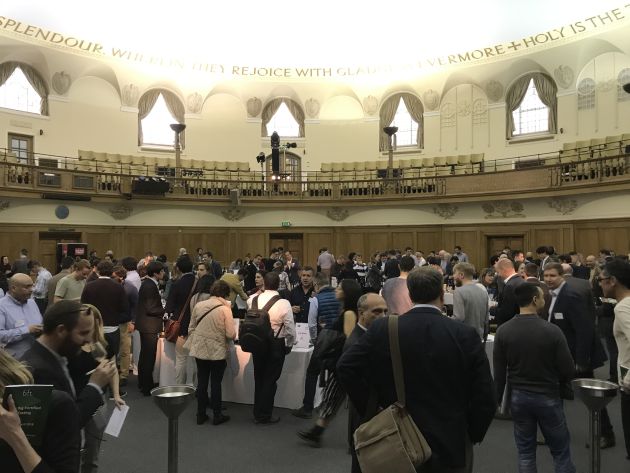
B.f.t plays hardball with visitors via individual vetting process
Visitors to yesterday’s Big Fortified Tasting would have all undergone a basic background checks, Harpers has learned.
Since last year’s show, organisers have been abiding to stricter rules while issuing entry passes, which includes checking whether visitors are active in the fortified industry, and for writers and bloggers, if they have posted online recently.
The hardline approach was introduced last year by Alex Bridgeman, who breathed new life into the show after a year’s hiatus in 2017.
He also introduced a blanket ban on students – unless they could prove their links to the industry.
“Last year we had a long conversation with the Wine & Spirit Education Trust (WSET) about it. The feedback we got from producers was that they want to be talking to people who want to promote their wines,” he said.
In previous years, students were issued with a WSET badge.
Now, they have to prove their value as an active member of the industry.
In reality, Bridgeman said only one student was turned away from last year’s show, “as many students are apprentices or working in a part-time role”.
But having introduced both measures, Bridgeman believes they have had a better mix of visitors at this and last year’s shows.
Bridgeman took over following the tragic passing of co-founder Ben Campbell-Johnson in 2016.
While organising the show is a hobby, the semi-retired Bridgeman said it is a full time job for three to four months of the year, which he shares with his wife, Elizabeth.
A lot of energy had gone into getting the mix right, he said.
Prior to the hiatus, “the show had 700 registered and 500 attending,” Bridgeman said. “We had 400 people through door last year.”
The other change includes shortening the show time from 6pm to 5pm.
“We want quality over quantity, and the other feedback we received is that no one is alert enough to do business after 5pm. After 4pm, people tend to stand at the table and not leave.”
In terms of trends, Bridgeman said the on-going popularity of Tawny Port continued to pick up from the slump in sales of late bottled harvest which have “dropped like a stone” in recent years.
He said: “In 1985, 100,000 cases for a LBV wasn't unusual. Now, 900 cases is considered a large production. That volume has to go somewhere and Tawny ports have picked up the slack.
“The only problem is that for Tawny, you have to leave the liquid in barrel for 10, 20, 30 or 40 years. It means producers have to be much more forward looking to try and work how much product they will need in three or even four decades’ time.”
New for this year’s show was also a table showcasing the first releases from the declared 2017 vintage.
“They had the luck of the weather,” said Bridgeman. “People are comparing 2017 to 1945, and that was an amazing vintage.”
Bridgeman also talked about the possibility of English and Welsh fortified wines making an appearance at next year’s show.
Mead and British vermouth in particular are currently gaining in popularity, with several English wine producers now dabbling.
Keywords:
- Sherry
- Port
- Alex
- London Wine Fair
- industry
- hardline
- bridgeman
- fortified industry
- hardline approach
- entry passes





